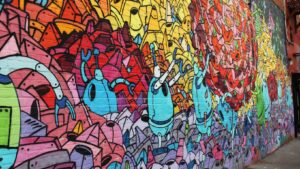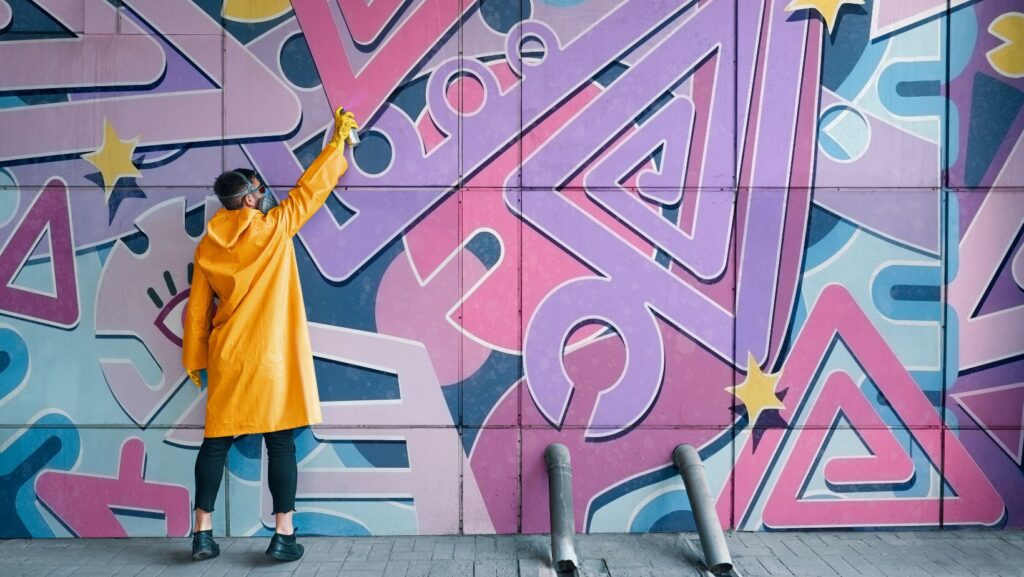Walking down the bustling streets of a city, one can’t help but be captivated by the vibrant and larger-than-life murals adorning the walls. As an avid admirer of art, I’ve always been drawn to the allure of mural wall art. These magnificent creations not only add a pop of color to urban landscapes but also tell compelling stories and evoke powerful emotions.
Join me on a journey to explore the beauty and significance of these awe-inspiring artworks that transform ordinary walls into extraordinary canvases.
Mural Wall Art
Historical Significance

Exploring the history of mural wall art reveals its deep roots in human expression. From ancient civilizations to modern urban settings, murals have served as powerful visual forms of storytelling. These large-scale artworks have often depicted cultural narratives, religious beliefs, and political ideologies, shaping communities’ identities through art on a grand scale. The historical significance of mural wall art lies in its ability to communicate narratives across generations, preserving stories and socio-political commentary for posterity.
Contemporary Mural Movements
In today’s artistic landscape, contemporary mural movements are at the forefront of urban revitalization and social change. Street artists and muralists are using walls as their canvases to address current societal issues, promote inclusivity, and ignite conversations within communities. The evolution of mural wall art into a dynamic medium for activism and cultural expression reflects the changing nature of street art as a powerful tool for engaging with diverse audiences. These movements are reshaping urban environments, turning blank walls into vibrant reflections of contemporary issues and cultural diversity.
Understanding Different Mural Art Styles
Graffiti and Street Art

Graffiti and street art are captivating forms of mural wall art that often serve as urban expressions of creativity and social commentary. I find that these styles encompass a wide range of techniques and messages, from elaborate murals to simple tags. Artists use graffiti and street art to challenge societal norms and share their perspectives on various issues. While some may view graffiti as illegal vandalism, it’s essential to recognize its cultural significance and role in shaping public spaces.
Trompe-l’oeil: The Art of Illusion
Trompe-l’oeil, meaning “deceive the eye” in French, is a remarkable mural art style known for its optical illusions that trick viewers into believing they are seeing real objects. I appreciate how artists masterfully create depth and realism in their compositions, playing with perspective to bring two-dimensional surfaces to life. Trompe-l’oeil murals can be found in both historical and contemporary settings, adding a touch of whimsy and enchantment to the urban landscape.
Community Mural Projects
Community mural projects represent a collaborative approach to mural wall art, where local residents, schools, or organizations come together to create meaningful artworks that reflect their shared values and aspirations. I’ve observed that these projects foster a sense of belonging and pride within communities, allowing individuals to contribute their creativity to transform ordinary walls into powerful storytelling platforms. Community mural projects often focus on themes relevant to the local context, serving as visual tributes to the diversity and unity of the people involved.
How to Commission Mural Wall Art
Working with Professional Mural Artists
When commissioning mural wall art, I always recommend working with professional mural artists. These artists bring expertise, creativity, and precision to the project, ensuring a high-quality and visually appealing outcome. Professional mural artists understand the intricacies of mural creation, from conceptualization to execution, and can adapt their style to suit your vision.
Pricing and Timing
In my experience, understanding the pricing and timing of a mural project is crucial. Professional mural artists typically provide detailed quotes based on factors such as mural size, complexity, materials, and location. It’s essential to discuss your budget upfront and clarify any additional costs that may arise during the project. Moreover, establishing a timeline with the artist is key to ensuring the project stays on track and meets your expectations. Communication is key to a successful collaboration with mural artists.
